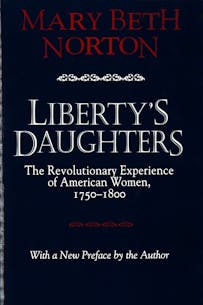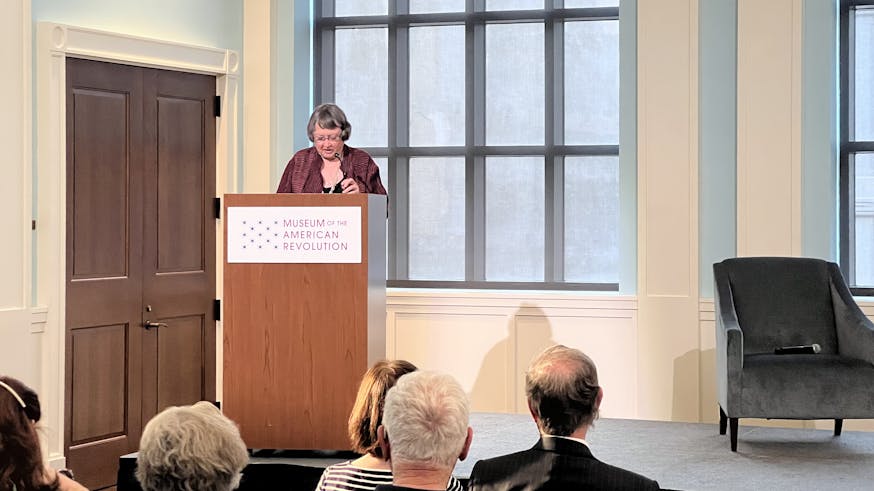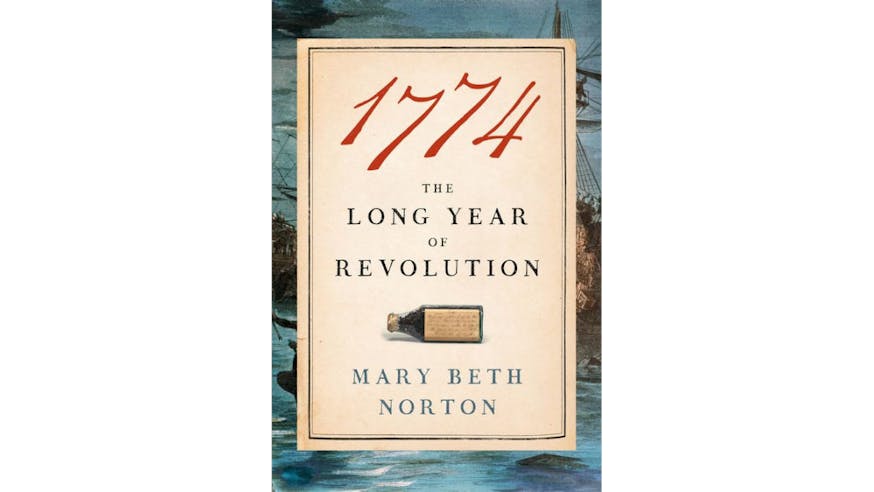Read the Revolution
Liberty's Daughters
May 10, 2023
Purchase the book from Cornell University Press.
A groundbreaking book when it was first published in 1980, Dr. Mary Beth Norton’s Liberty’s Daughters: The Revolutionary Experience of American Women, 1750-1800 would make Abigail Adams proud. Taking Adams’s charge to “remember the ladies” to a new, scholarly level, Norton mined the family papers of approximately 450 18th-century families, disproving the idea that sources on women were scarce. As she explains, she wanted to “examine eighteenth-century women’s self-perceptions, the influence of their sexual identity on all phases of their lives, and, perhaps, most importantly, the impact of the American Revolution upon them.”
Through the words of the women themselves, Norton discovered that a kind of “golden age” of equality for women in the 1600s and 1700s did not really exist and that the Revolutionary War had a significant impact on women’s lives during those years and after. The excerpt below resonates with the way stories of the lived experience of the American Revolution are told in the Museum’s galleries. As Norton notes, “Most narratives of the Revolutionary War concentrate upon describing a series of pitched battles between uniformed armies. Yet the impact of the conflict can more accurately be assessed if it is interpreted as a civil war with profound consequences for the entire population.”
Read on to learn more about the decision faced by many women to either stay in their homes and live with the effects of the war or to flee, with all the uncertainty that entailed.
Excerpt
In 1777 a Pennsylvanian told John Adams resolutely that “if the two opposite Armys were to come here alternately ten times, she would stand by her Property untill she should be kill’d. If she must be a Beggar, it should be where she was known.” Hannah Iredell’s sister Jean Blair made the same choice in 1781 when the redcoats neared her North Carolina home. “The English are certainly at Halifax but I suppose they will be every where & I will fix myself here it is as safe as any where else & I can be no longer tossed about,” she declared. The Philadelphian Elizabeth Farmar also decided to stay in her house, despite the fact that it lay between the lines during the occupation of the city in 1777-1778. As a result, she, her husband, and their daughter were endangered by frequent gunfire, had difficulty obtaining adequate food supplies, and suffered “manny cold days” that winter because the British confiscated their firewood, “Notwithstanding we thought ourselves well of[f] in comparison to some,” she remarked in 1783. “Most of the houses near us have been either burnt or pulled down as would have been the case with us if we had not stayd in it even at the hasard of our lives.”
Sign Up
Get biweekly Read the Revolution featured excerpts right to your inbox.
But not many families were as determined to protect their property. Greater numbers of Americans preferred, like the Amblers of Virginia, to go “scampering” when they learned that the enemy was nearby, seeking shelter with friends and relatives in more secure parts of the countryside. After twenty such unexpected guests descended on Jean Blair one day in May 1781, she commented, “I hardly ever knew the trouble of house keeping before, a large family and continual confusion and not any thing to eat but salt meat and hoe cake and no conveniences to dress them.” Sally Cobb Paine likewise felt compelled to offer refuge to her husband Robert’s sisters when they fled south to Taunton after the alarms of April 19, 1775, but housing simultaneously both the spinster Eunice Paine and the six-member Greenleaf clan proved to be difficult. In mid-May the pregnant Sally reported to her congressman husband, “I have my house full and hands too.” She expressed her hope “[that] they will Live by themselves before Long for it is most too hard for me to have the Care of so Large a family at present.” As it turned out, though, the Greenleafs found “but very few willing to contribute to the oppressed,” and so they remained in the crowded Paine household until the evacuation of Boston, although Eunice did return to her lodgings in Germantown, near Braintree.
Even after the redcoats’ long-awaited departure, Boston, said one resident, was not “that agreable place it once was – Almost every thing here, appears Gloomy & Mallancholy.” One of the chief reasons for the Bostonians’ gloom was the presence of epidemic disease in their midst. The unhealthy conditions in the besieged city had helped to incubate both smallpox and dysentery, and an epidemic of the latter had already swept the Massachusetts countryside the preceding fall, killing Abigail Adams’s mother and niece, among many others. “The desolation of War is not so distressing as the Havock made by the pestilence,” Abigail remarked then. She could do nothing to prevent the deaths from dysentery, but smallpox was another matter. After it became clear that the disease would probably spread across New England, carried by soldiers returning from the army that had invaded Canada as well as by Bostonians, she began making arrangements to have herself and her children inoculated.
Mary Beth Norton, Liberty’s Daughters: The Revolutionary Experience of American Women, 1750-1800 (Cornell University Press, 1980), 199-201.
Tags
Learn More

Read the Revolution with Mary Beth Norton

Read the Revolution Speaker Series

